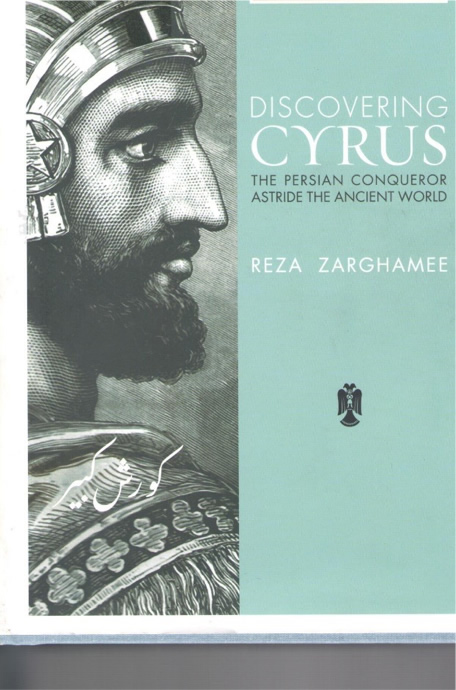In Discovering Cyrus: The Persian Conqueror Astride the Ancient World, Reza Zarghamee relates a shocking omission. “Ferdowsi does not mention Cyrus in the Shahnameh, and the Sasanids seemingly have no memory of him through local Persian traditions” (535). The King of Kings memorialized in Greek texts and recently celebrated with the North American tour of the Cyrus Cylinder was virtually forgotten by Iranians. Zarghamee rectifies the propensity to forget by offering a volume about Cyrus, which is engaging, accessible, and well written. That is no simple feat for a 735-page book that includes twenty appendices and over a hundred pages of endnotes. Don’t be intimidated though! This may not be a book that you finish in one sitting, but it is a book that you will savor as you make your way through the compelling anecdotes, careful scholarship, and balanced perspective.
The book is divided into three sections. Chapters 1 through 6 depict the political configuration of the Ancient Near East and Cyrus’ origins, rise to power, and connections to the Zarathushti religion. Chapters 7 through 11 detail Cyrus’ conquests and political administration. Chapter 12 though 15 discuss the Persian army and Cyrus’ legacy. These chapters are followed by twenty appendices, which treat different problems within Iranian history. For example, Why the use of the title “King of Anshan”? How do we understand the Median worship of Mitra? What is the historical significance of the Cyrus Cylinder? What is Cyrus’ legacy in Iranian epics?
For the reader discovering Cyrus for the first time, the book is a useful work that synthesizes mainly Greek sources and current scholarship. For seasoned Achaemenid readers, there are several thought-provoking sections. The treatment of Achaemenid women – including Cassadane, Amytis, Artystone, and Atossa – is illuminating and a welcome change from the intense focus on Iranian male warriors celebrated in Ancient Near Eastern texts and scholarship. The discussions of the origins of Zarathustra and Jews of Babylon provide a useful synthesis and demonstrate Zarghamee’s own deft approach. And if you are wondering how Zarghamee answers the longstanding question “Is Cyrus Zoroastrian?,” be sure and review his discussion in chapter 6 where he argues that Cyrus probably considered himself Zarathushti, but his beliefs may have been more “eclectic” compared to Darius and Xerxes (136).
Mage Publishers is to be commended for producing a volume of such length and giving Zarghamee the freedom to develop his insights, especially in the appendices. Nonetheless, while the book is treat, it would be wonderful to see a condensed version that may appeal to a wider range of readers.
Nerina Rustomji is an associate professor at St. John’s University (Queens, New York) where she teaches Middle Eastern History.
Mage Publishers, 2013. pps 735
Official price: Hardcover $85 from Mage
But $57.30 (Hardcover) from Amazon, $30 (Kindle) from Amazon
ISBN-13: 978-193382338-6
ISBN-10: 193382338-0
This review appeared in The FEZANA JOURNAL, Fall 2014, No 28, Vol. 3.

